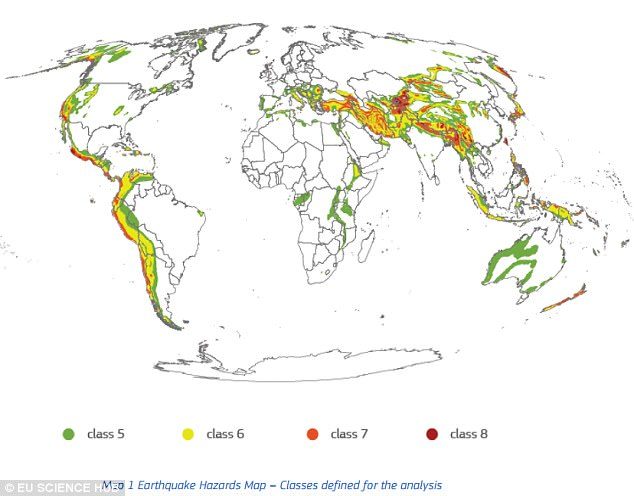
In the last few decades, the risk has dramatically increased; the number of people living in seismic areas, for example, has increased by 93 percent in just 40 years.
The findings, compiled in the Atlas of the Human Planet 2017, reveal the global exposure to natural disasters has doubled since 1975, largely as a result of population growth and development.
Additional images
In the analysis, the researchers accounted for six major natural hazards: earthquakes, volcanoes, tsunamis, tropical cyclone storm surge, tropical cyclone wind, and floods.
They used satellite observation data over 40 years to measure for 'exposure,' or 'the people and assets at risk of potential losses or that may suffer damage to a hazard impact.'
'It covers several dimensions like the physical, the social, and the economic dimensions,' the authors wrote.
Earthquakes were found to be the largest hazard, with the number of people potentially affected jumping from 1.4 billion in 1975 to 2.7 billion in 2015.
Now, they say one in three people is exposed to the risk of earthquakes.
And, the researchers also found more than 400 people now live near one of the 220 most dangerous volcanoes in the world.
When it comes to tsunamis, the researchers say regions in Asia are the worst exposed.
Japan has the most built-up surface at risk of a tsunami, followed by China and the US, they say.



Reader Comments
to our Newsletter